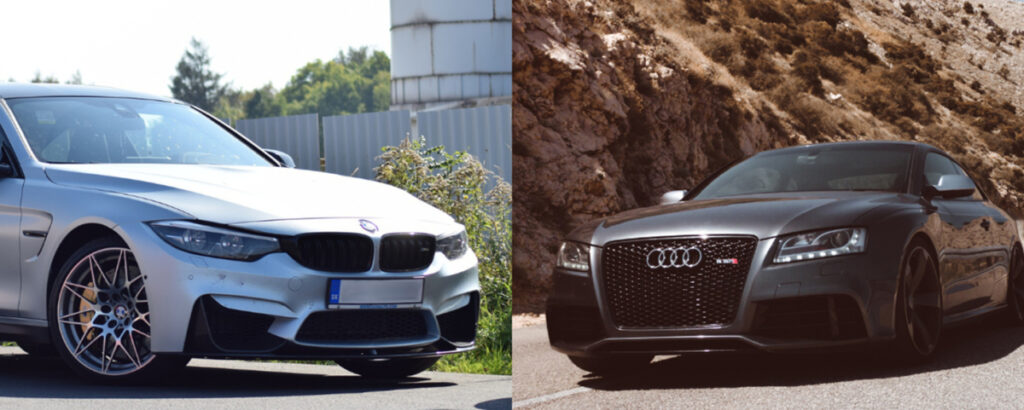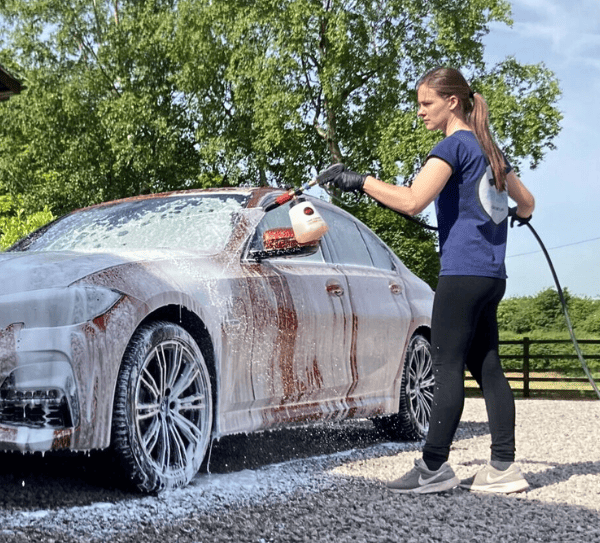Silver and grey are the third and fourth most popular car colors worldwide, and not without good reason. But which car color is the best? In this article, I’ll compare silver and grey cars and their pros and cons so you can decide on the best choice for your next vehicle.
The Quick Answer
Silver cars are better at hiding dust than grey cars, however grey cars are better at hiding mud. Grey cars typically look shinier when clean because the darker paint is better at reflecting the environment. Silver cars are better at hiding scratches whilst grey cars are better at hiding stone chips.

Considering other colour choices too? Check out these articles:
Which Color Stays Looking the Cleanest?
If you drive your car frequently or store it outside, then it’s going to get dirty fairly quickly no matter what climate you live in. Silver and grey are two of the best colors for hiding dirt and dust which makes them very good options if you can’t clean your car as frequently as you’d like.
Silver cars are usually better at hiding dust compared to grey cars because they are lighter and the dust blends in with the color more. Hence, silver is probably the best option if you live in a warm and dry climate.
Grey cars are a bit better at hiding mud and traffic film which builds up on the car when driving in the rain, so often they’ll stay looking cleaner for longer compared to silver cars in wetter climates.

Which Color Looks the Shiniest?
Grey cars often look glossier than silver cars when they are completely clean. The darker appearance of a grey car helps to provide more dramatic reflections and create a glossier appearance. Since silver cars are very light, they tend not to reflect their surroundings as much and can be difficult to make look super shiny.
However, it’s worth noting that the condition of the paint is the main factor that affects how glossy the car looks (more on this in the next section).

Hiding Paint Imperfections
There are three types of paint imperfections that we need to unpack here:
- Deep scratches
- Stone chips
- Minor clear coat swirls and scratches
First, let’s consider deep scratches. Typically these occur due to minor collisions, but can also happen from things like keys and rings being accidentally rubbed alongside the vehicle.
These scratches are typically white in color so silver cars do best at hiding them compared to grey cars. The only exception is when the scratch is incredibly deep and has gone through to the metal. These scratches usually are grey so of course grey cars tend to conceal them more.
Secondly, we’ve got stone chips. Grey cars are better at hiding stone chips compared to silver cars because they are often dark grey in color, hence the grey paint does a better job at masking them. Stone chips are hard to avoid if you drive on fast roads in busy periods, but you can put paint protection film (PPF) on the hood and bumper to protect the paintwork if you’re concerned about collecting them.
Finally, we’ve got clear coat scratches. The clear coat is the top layer of paint which sits above the color coat (grey or silver in this case). This clear coat is easily scratched or “swirled” when a car is washed most commonly by sponges and brushes.
Silver cars are better at hiding minor scratches and swirl marks in the clear coat compared to grey cars. Grey paint contrasts more with the clear coat scratch which makes it more visible in direct sunlight.
If you want to prevent these clear coat scratches and keep your car looking its best, then check out my complete guide to washing a car without causing swirl marks.
Brand New Price
Silver and grey cars are similarly priced when brand new. Some makes will offer silver and grey paint as “standard” which means no extra charge is added, however on most cars you can expect to pay around $500-$750 (or £500-£750 in the UK) for silver or grey paint from the factory.
This is because most silver and grey cars are metallic. Metallic paint is more expensive and time-consuming to apply, so most brands charge a premium for it. On some cars you can also get pearlescent paint finishes which also cost a similar amount to metallic paints. Pearlescent finishes are more common for silver cars.
Check out my comparison between metallic and pearlescent paint to learn more.
Some cars are available in solid grey which can sometimes be included as standard (no additional cost) because it is cheaper to make. However, usually it is classed as a premium color despite its solid finish so a similar charge to metallic and pearlescent paint is to be expected.
Resale Value
The resale value of silver and grey cars tends to be quite similar since they are reasonably equal in terms of popularity and factory price.
Silver cars have become a bit less popular over recent years, whilst grey cars are on the up. According to a recent survey by PPG, the most popular car colors were:
- White (35%)
- Black (18%)
- Grey (14%)
- Silver (11%)
- Red (7%)
The slight decline in popularity of silver cars could mean they may yield a lower price on the used car market in the future, however silver and grey are both pretty safe colors to go for compared to brighter options such as red, blue and yellow.
Typically, grey-scale (white, black, grey and silver) cars have the best resale values no matter what type of car it is. Whether it be a sports car, SUV, hatchback or saloon.
Here are some more articles you might find useful:

